- Home
- P. D. James
The Maul and the Pear Tree Page 8
The Maul and the Pear Tree Read online
Page 8
Marr’s ordeal was unfortunate and the conduct of the police, though not of Graham by name, was subsequently criticised in the House of Commons on 18 January 1812 by Sir Samuel Romilly in language which is sometimes echoed today by those who feel they are the victims of an over-zealous constabulary:
He did not wish to speak harshly of the police, but he did think it a most monstrous evil that so many persons had been taken up on that occasion upon such slight ground of suspicion, among them the nearest relative of one of the murdered persons, who on no ground whatever, had been apprehended and kept for forty-eight hours in custody on the dreadful charge of having murdered his brother. One way and another no less than forty or fifty persons had been apprehended on bare suspicion.
The theory that the murders were a private vendetta against Marr was comforting. The alternative struck cold in the hearts of every humble and defenceless family in East London.
As De Quincey wrote:
With this mighty tide of pity and indignation pointing backwards to the dreadful past, there mingled also in the thoughts of reflecting persons an undercurrent of fearful expectation for the immediate future. All perils, especially malignant, are recurrent. A murderer, who is such by passion and by wolfish craving for bloodshed as a mode of unnatural luxury, cannot relapse into inertia…. But, apart from the hellish instincts that might too surely be relied on for renewed atrocities, it was clear that the murderer of the Marrs, wheresoever lurking, must be a needy man; and a needy man of that class least likely to seek or find resources in honourable modes of industry. Were it, therefore, merely for a livelihood, the murderer whom all hearts were yearning to decipher, might be expected to make his resurrection on some stage of horror, after a reasonable interval…. Two guineas, perhaps, would be the outside of what he had obtained in the way of booty. A week or so would see the end of that. The conviction, therefore, of all people was, that in a month or two, when the fever of excitement might have cooled down, or have been superseded by other topics of fresher interest, so that the newborn vigilance of household life would have had time to relax, some new murder, equally appalling, might be counted upon.
But if there were any who could comfort themselves with the hope that they would gain at least a few months of safety in which to secure their houses against a fresh outrage, or who could even persuade themselves that the murderers were foreign sailors now far off on the high seas, or convicts released from the hulks who had passed on their annihilating way through London and were now remote in the country or in Ireland, they were speedily to be disillusioned. ‘Such,’ De Quincey continues, ‘was the public expectation. Let the reader then figure to himself the pure frenzy of horror when in this hush of expectation, looking, and indeed waiting for the unknown arm to strike once more … on the twelfth night from the Marr murder, a second case of the same mysterious nature, a murder on the same exterminating plan, was perpetrated in the very same neighbourhood.’
1 The Morning Post obligingly translated this for the benefit of its readers: My dear friends, the rumour is great, and the deed we have done is great. I think it expedient we should leave England as soon as possible, of course you will meet me at the old rendezvous. I remain your sworn friend, Patrick Mahony.
2 A public house bearing the name still stands in Artichoke Hill.
3 Some newspapers reported that the initials stamped on the head of the maul were ‘J.P.’, others ‘I.P.’ On the drawing reproduced opposite page 84 they are clearly ‘I.P.’
FOUR
Twelfth Night
The parish adjoining St George’s-in-the-East was St Paul’s, Shadwell, comprising a community of 9,000 people, most of them mariners, shipwrights and dockworkers. Circumstances had squeezed them into a warren of alleys and yards between Ratcliffe Highway and the squalid reaches of the river at Wapping. In its composition and way of life St Paul’s was indistinguishable from St George’s, but a formal boundary divided the two parishes down New Gravel Lane – some 300 yards to the east of Old Gravel Lane and roughly parallel to it. New Gravel Lane was lined with the familiar conglomeration of ship’s chandlers, lodging houses, pawnbrokers, and public houses packed out at night with brawling sailors. In the Lane there was one public house to every eight other houses.
But one of these houses stood out from the rest for its quaint air of respectability. Mr and Mrs Williamson were a genteel couple. They had held the licence of the King’s Arms, at number 81 New Gravel Lane, for fifteen years, and so were well known in the area. They were also highly regarded. Williamson was a man of fifty-six and his wife Elizabeth was sixty. The remainder of the household consisted of their fourteen-year-old grand-daughter, Kitty Stillwell, and a servant in her fifties, Bridget Harrington, who worked in the tap-room. For the past eight months the Williamsons had taken in a young lodger, John Turner.
The couple liked to get to bed early, and they imposed their own strict habits on the household. There were no late night gambling parties or cockfights in the King’s Arms. Punctually every night at eleven o’clock Williamson began to put up the shutters, and if there were trouble with late drinkers he was well able to handle it; a big, burly man, tall and strong. There was a watch-box just opposite; and, as it happened, one of this year’s parish constables, a man named Anderson who was a particular friend of Williamson, lived next door but one.
The King’s Arms had two upper stories and hence stood literally, as well as morally, higher than the houses on either side. The ground floor comprised the tap-room, a private kitchen behind, and a parlour. Underneath, with a flap-door opening on to the pavement for the delivery of barrels of beer, was a cellar. The Williamsons’ bedroom and that of Kitty Stillwell took up most of the first floor, from the landing of which a further flight of stairs led up to a couple of garrets. These were occupied by Bridget Harrington and the lodger. Behind the house was a plot of enclosed ground, where in fine weather the inhabitants of the King’s Arms and the neighbouring houses played Bumble-puppy, a variant of skittles; and behind this ground were acres of waste land belonging to the London Dock Company.
The night of Thursday, 19 December was fine and mild, but apart from roaming gangs of seamen the streets were nearly empty. Twelve days had gone by since the murder of the Marrs, and it was terrifyingly clear to everyone who lived in Shadwell that the magistrates were in despair. Every night thirteen frightened and lonely watchmen employed by the Churchwardens, Overseers and Trustees of the parish of St Paul’s staggered drunkenly from their watch-boxes to call the half-hours and lurched back to safety again for another swig to drown their fears. Very occasionally one – or more usually two, for now they preferred company – of the five police officers from Wapping or the eight from Shadwell would patrol in the parish, but with a population of about 60,000 to protect in all the six parishes they were supposed to cover these heartening appearances were rare. The only real safety lay behind bolts and bars, especially after nightfall, and this week was bringing the longest nights of the year. Sixteen hours of darkness gave a murderous gang sixteen hours of silent cover. In the streets, outside the tight-shut doors, the oil-lamps guttered unnaturally loud. When a wind blew up from the river their twisted cotton wicks flared up and as suddenly died down, scarifying and multiplying the shadows. To shatter so troubled a silence with the half-hour’s call a watchman had to nerve himself with something more potent than prostitutes’ gin.
But social life had not been brought completely to an end. As it neared eleven o’clock Mr Lee, the landlord of the Black Horse, the public house opposite the King’s Arms, went from time to time to his door to look out for his wife and daughter. They had been to the Royalty Theatre in Wellclose Square, and Lee was concerned for their safety, his mind dwelling darkly on the murders. Then, at ten minutes to eleven, Anderson, the constable, slipped out into New Gravel Lane, braving the shadows, and made his way to the King’s Arms, two doors away, for a pot of beer.
Williamson welcomed his old friend. He was in a mood to talk. ‘You s
han’t carry it home,’ he insisted, ‘I’ll send it.’
While Mrs Williamson drew the beer her husband sat back in a favourite armchair in the kitchen, warming himself by a low fire. Only one thought can have been in his mind. Suddenly he sat up. ‘You’re an officer,’ he said. ‘There’s been a fellow listening at my door – with a brown jacket on. If you should see him take him immediately into custody. Or tell me.’
‘I certainly will,’ Anderson replied; adding grimly, ‘for my own safety as well as yours.’
Bridget Harrington carried the pot of beer the few yards to Anderson’s house, then returned to the King’s Arms. Anderson was certain, when he said good night, that the only people then in the public house were Mr and Mrs Williamson, Bridget Harrington, Kitty Stillwell and Turner, the lodger.
It took Anderson little more than twenty minutes to finish his beer. Although his neighbour always reckoned to close the tap-room to casual drinkers at eleven o’clock sharp, he would never turn away friends until he finally locked up for the night and went to bed. Thirsty again, Anderson decided to fetch another pot. He opened the street door and, immediately, was swept into turmoil. People were shouting and running, and above the din, repeated again and again, came the terrible cry, ‘Murder! Murder!’ A small crowd stared up at Williamson’s house and Anderson followed their gaze. A man, nearly naked, was suspended in mid-air, clutching sheets knotted together. Hand over hand he was making his way down from an open garret window, shrieking and crying incoherently. A watchman, Shadrick Newhall, stood helplessly on the cobblestones, lantern in one hand, rattle in the other, gaping as though he saw a ghost. Anderson rushed indoors for his constable’s sword and staff, rushed out again, and was in time to see the man drop the last eight feet into the arms of the watchman. It was John Turner, the lodger.
The crowd acted by instinct. Some began beating down the street door. Anderson found himself with three or four others prising open the pavement flap that led down to the cellar. One was armed with a poker, another, the butcher, wielded an axe. Lee, the landlord of the Black Horse, joined them. They broke the flap open. Steps led down into darkness, but there was light enough to reveal Williamson’s body. It lay stretched out on its back, head downwards, the legs splayed out grotesquely on the stairs that led up to the tap-room. Alongside the corpse lay an iron bar, smothered with blood. The old man’s head had been beaten in cruelly. His throat was cut to the bone and the right leg fractured. But he must have put up a brave fight. One hand had been dreadfully hacked about, as though in the last frenzied moments he had clutched at the knife that finished him. A thumb dangled loosely in a spreading pool of blood.
As the little party gazed, frozen with horror, a cry came from above. Someone shouted down: ‘Where’s the old man?’
They had to climb over Williamson’s broken and bleeding body to get up to the kitchen, where half an hour earlier the old man had been warming himself by a dying fire. The first corpse they saw was Mrs Williamson’s. It lay on the left side, the skull terribly shattered, the throat slashed through. Blood poured from a great, gaping wound. Bridget Harrington was not far away. She lay on her back, her feet under the grate, and near to the dead fire she must already have been laying for the morning when the murderers struck. Bridget’s skull was more dreadfully fractured, even than Mrs Williamson’s. But it was the throat that held Anderson’s horrified gaze. It had been sliced through to the neckbone.
5 Escape of John Turner from the King’s Arms
Little bands of men armed with axes and pokers searched the house, but the murderer had fled. Miraculously Kitty Stillwell, the grand-daughter, was still in her bed, fast asleep, unharmed. She was carried out into the street. Someone sent a message to Shadwell Public Office and a couple of police officers rushed to the scene. They had been scouring Shadwell parish that very night, carrying cutlasses and pistols, but had been taking supper in a tavern opposite the Public Office at the moment the murderer broke in.
Now, according to a report in The Courier, ‘All Wapping was immediately in uproar. The drums of the volunteers beat to arms, and fire-bells were rung, and every person flew in consternation to the spot. The police searched every house around and every boat in the river, while every cart, wagon and carriage was stopped.’ This seems an exaggerated account, considering the paucity of police available. Nevertheless, it is true that London Bridge was sealed off and a suspect picked up. And towards morning, to hearten the terrified populace, a detachment of Bow Street Runners came cantering along Ratcliffe Highway, streaking the drab streets of Shadwell and Wapping with a sudden flash of colour from their bright blue coats, scarlet waistcoats, blue trousers, Wellington boots and black hats. Then, The Courier reported, ‘The bodies were removed from the shocking position in which they lay, undressed, washed, and laid out on boards, in the back parlour, where the old couple sometimes used to sleep; and the little girl, who was found asleep above stairs, was removed to a place of safety.’
Several clues were quickly discovered. Anderson reported that a tall man in a long Flushing coat had been seen outside the King’s Arms that evening. The lodger, when they could get some sense out of him, stammered out that he had actually seen a tall man so clad bending over Mrs Williamson’s body – though anything Turner said was at that time highly suspect, since he had been the first to be taken in charge by the watchman. A window at the back of the King’s Arms was found open, and there were bloodstains on the sill. Outside was a high clay bank in which a footprint was found. The clay was wet, and whoever had escaped that way must have had to drop down eight feet and then scramble up a slippery bank. He would have clay on his trousers, and perhaps on the front of his jacket too, and clay was not easy to wash off. It seemed that the murderer had made his escape over the waste land belonging to the London Dock Company. So also, someone recalled, had the gang who murdered the Marrs. A man with a claim to forensic ability – perhaps the butcher? – put it out as his opinion, considering the nature of the wounds, that the murderer was left-handed.
Before it was yet midnight a huddle of terrified men gathered in the vestry of St Paul’s, Shadwell. The Churchwardens, Overseers and Trustees, despite their impressive titles, were simple folk. They were local tradesmen and artisans, shopkeepers, butchers, biscuit bakers and victuallers, who had known the Williamsons for years. They would have gossiped with them in the tap-room of the King’s Arms about the catastrophe that had struck Marr’s family: at first in incredulous horror, later, perhaps, in an attempt to keep their spirits high, exchanging ghoulish jokes. Now though, sickened by the sight of three more dreadfully mangled corpses, they had suddenly to adjust to a frightening new reality. They were caught up at the centre of events so chillingly macabre that ordinary folk could only shudder in disbelief. But these men, holding office, were not permitted to act as ordinary folk. They constituted authority; and stunted and dwarfed as it now was by stupendous events, they had a clear responsibility to discharge. So, with their clerk Thomas Barnes, they assembled near midnight in the familiar vestry, where the normal calendar ran to marriages, tithes, christenings and the poor-rate, to deliberate, so to speak, at Cabinet level. They passed hurried resolutions; entered up the Minute Book; sacked all the watchmen; and sent Barnes hurrying off to Skirven the printer of Ratcliffe Highway. Less than an hour after the murders another hand-bill appeared in the streets.
100 Guineas
REWARD
MURDER!
WHEREAS
On THURSDAY NIGHT, 19th December, 1811, between the hours of Eleven and Twelve o’ Clock, Mr WILLIAMSON his WIFE, and the MAID SERVANT, were all of them most barbarously MURDERED in his house, the Sign of the
KING’s ARMS
NEW GRAVEL LANE
SAINT PAUL, SHADWELL.
The Churchwardens, Overseers, and Trustees of the Parish of St Paul, Shadwell, do hereby offer a Reward of ONE HUNDRED GUINEAS, to any Person or Persons who shall discover and apprehend the Perpetrator or Perpetrators of the said HORRID MURDER,
on Conviction.
By Order of the Churchwardens, Overseers, and Trustees
THOMAS BARNES,
VESTRY CLERK
SHADWELL
19th December, 1811.
But the motive? What terrible appetite for gain or passion for revenge could conceive malignity on such a scale, could account for seven victims in less than a fortnight, with brains beaten out and throats butchered? It was beyond all experience, irrational. The parish vestry was stupefied. Those who sought a simple motive of robbery pointed out that both Marr and Williamson were relatively rich. Although nothing had been stolen from Marr it was discovered that Williamson’s watch was missing. Perhaps the gang, surprised in the one case by Margaret Jewell’s ringing and in the other by the cries of the lodger, had on each occasion been foiled in the act of plunder, and turned coward? It was a theory that left too much unexplained. Why was money left in Marr’s pocket and in the shop till? Why stop at taking Williamson’s watch? Why not at least grab the loose money in his till? Was it in character that so brutal a gang should turn tail so swiftly, empty-handed, with only the pointless murders accomplished?
But if there was no prime motive of robbery, was it a case of multiple vengeance? Some sought to establish a connection between Marr and Williamson that might provide a clue, but none was apparent. Marr was young, and had been in the neighbourhood for only a few months; Williamson was fifty-six and had been settled in Shadwell for years. Yet the parishioners must have tried desperately hard to find a common link between the two families: for the alternative – if no rational motive for private vengeance could be found – was too horrible to contemplate. A maniac, or a gang of maniacs, was at large, cunning, pitiless, inhuman, who might strike again at any moment during the long December nights.

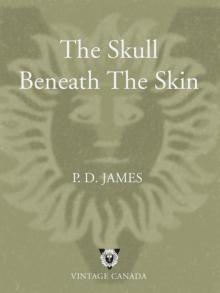 The Skull Beneath the Skin
The Skull Beneath the Skin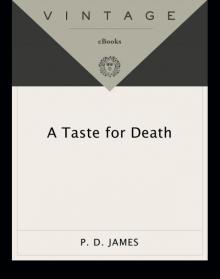 A Taste for Death
A Taste for Death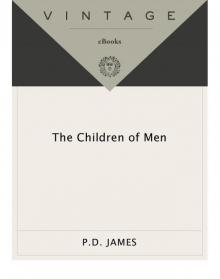 The Children of Men
The Children of Men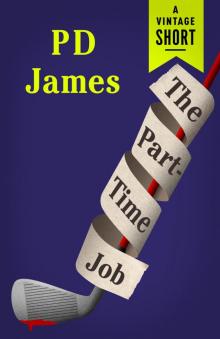 The Part-Time Job
The Part-Time Job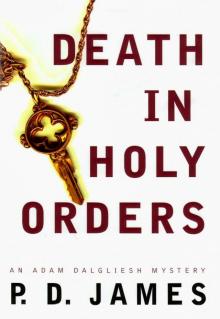 Death in Holy Orders
Death in Holy Orders The Victim
The Victim Shroud for a Nightingale
Shroud for a Nightingale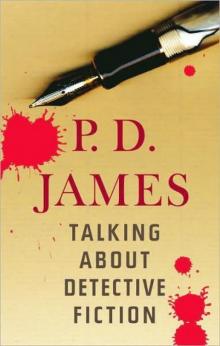 Talking about Detective Fiction
Talking about Detective Fiction Sleep No More
Sleep No More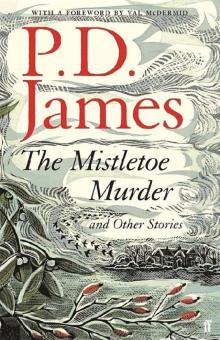 The Mistletoe Murder and Other Stories
The Mistletoe Murder and Other Stories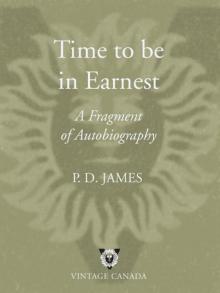 Time to Be in Earnest
Time to Be in Earnest Original Sin
Original Sin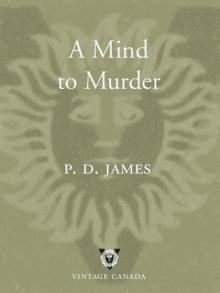 A Mind to Murder
A Mind to Murder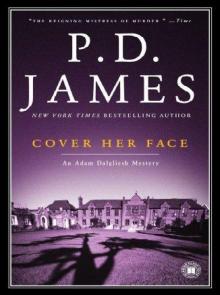 Cover Her Face
Cover Her Face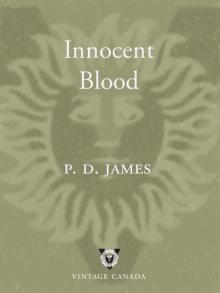 Innocent Blood
Innocent Blood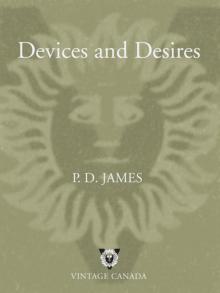 Devices and Desires
Devices and Desires Sleep No More: Six Murderous Tales
Sleep No More: Six Murderous Tales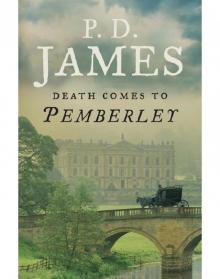 Death Comes to Pemberley
Death Comes to Pemberley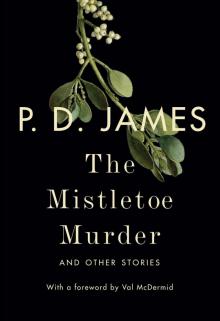 The Mistletoe Murder
The Mistletoe Murder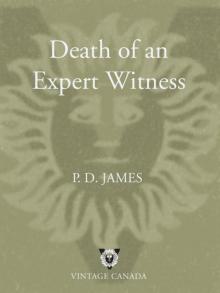 Death of an Expert Witness
Death of an Expert Witness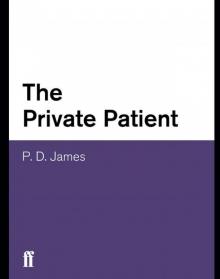 The Private Patient
The Private Patient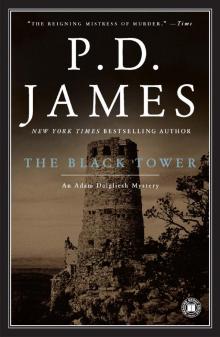 The Black Tower
The Black Tower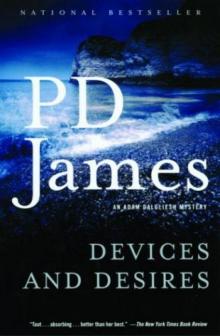 Devices & Desires - Dalgleish 08
Devices & Desires - Dalgleish 08 Unnatural Causes
Unnatural Causes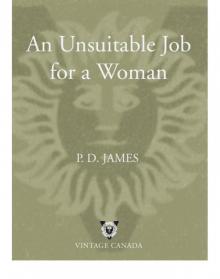 An Unsuitable Job for a Woman
An Unsuitable Job for a Woman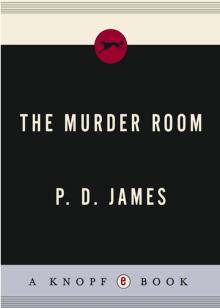 The Murder Room
The Murder Room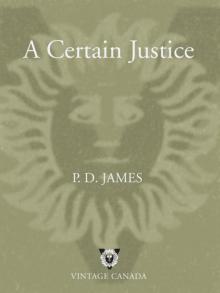 A Certain Justice
A Certain Justice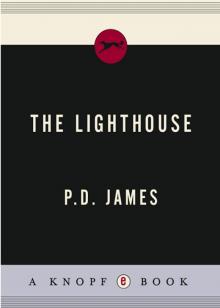 The Lighthouse
The Lighthouse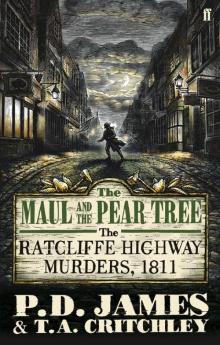 The Maul and the Pear Tree
The Maul and the Pear Tree